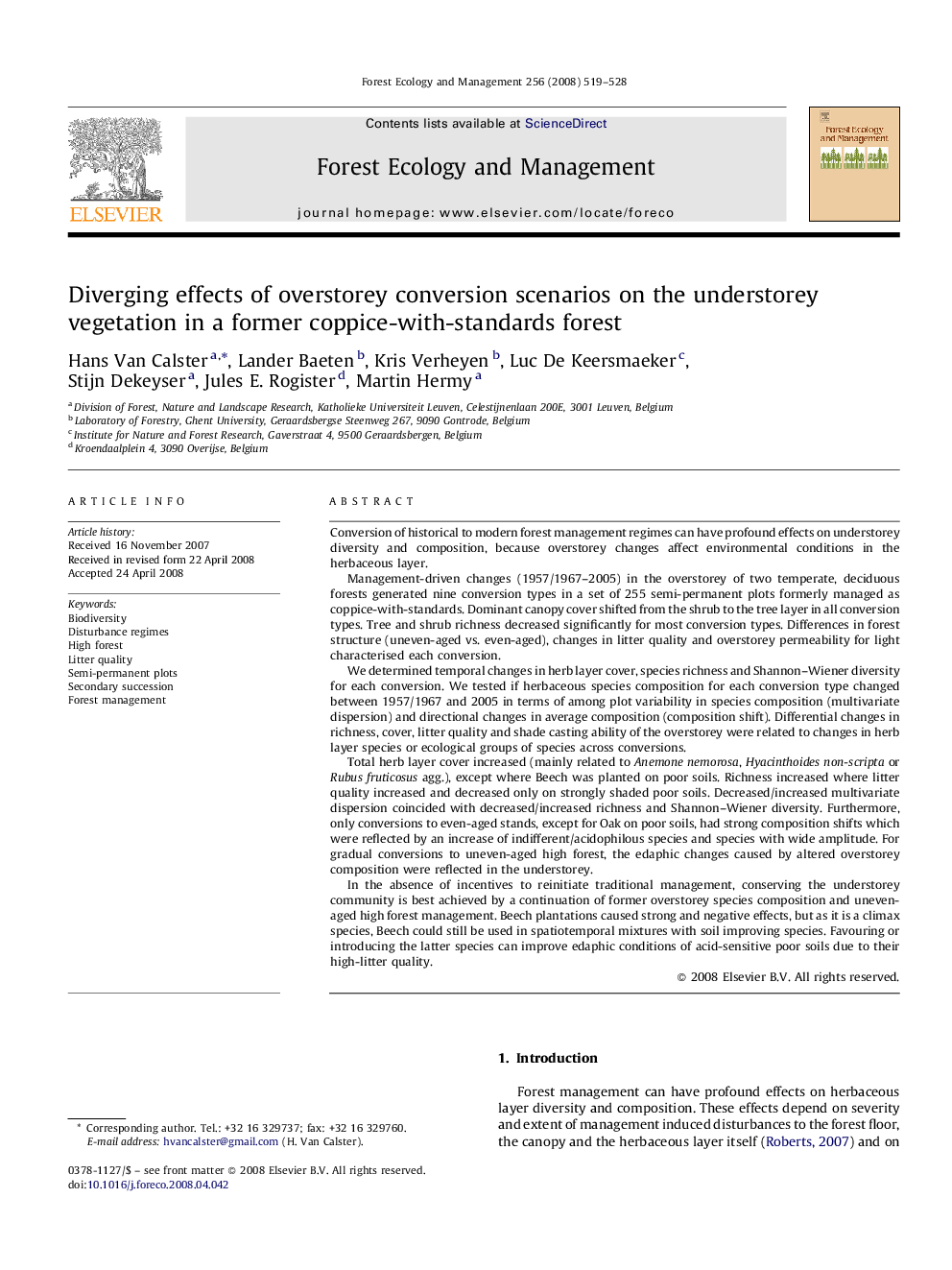| کد مقاله | کد نشریه | سال انتشار | مقاله انگلیسی | نسخه تمام متن |
|---|---|---|---|---|
| 89628 | 159349 | 2008 | 10 صفحه PDF | دانلود رایگان |

Conversion of historical to modern forest management regimes can have profound effects on understorey diversity and composition, because overstorey changes affect environmental conditions in the herbaceous layer.Management-driven changes (1957/1967–2005) in the overstorey of two temperate, deciduous forests generated nine conversion types in a set of 255 semi-permanent plots formerly managed as coppice-with-standards. Dominant canopy cover shifted from the shrub to the tree layer in all conversion types. Tree and shrub richness decreased significantly for most conversion types. Differences in forest structure (uneven-aged vs. even-aged), changes in litter quality and overstorey permeability for light characterised each conversion.We determined temporal changes in herb layer cover, species richness and Shannon–Wiener diversity for each conversion. We tested if herbaceous species composition for each conversion type changed between 1957/1967 and 2005 in terms of among plot variability in species composition (multivariate dispersion) and directional changes in average composition (composition shift). Differential changes in richness, cover, litter quality and shade casting ability of the overstorey were related to changes in herb layer species or ecological groups of species across conversions.Total herb layer cover increased (mainly related to Anemone nemorosa, Hyacinthoides non-scripta or Rubus fruticosus agg.), except where Beech was planted on poor soils. Richness increased where litter quality increased and decreased only on strongly shaded poor soils. Decreased/increased multivariate dispersion coincided with decreased/increased richness and Shannon–Wiener diversity. Furthermore, only conversions to even-aged stands, except for Oak on poor soils, had strong composition shifts which were reflected by an increase of indifferent/acidophilous species and species with wide amplitude. For gradual conversions to uneven-aged high forest, the edaphic changes caused by altered overstorey composition were reflected in the understorey.In the absence of incentives to reinitiate traditional management, conserving the understorey community is best achieved by a continuation of former overstorey species composition and uneven-aged high forest management. Beech plantations caused strong and negative effects, but as it is a climax species, Beech could still be used in spatiotemporal mixtures with soil improving species. Favouring or introducing the latter species can improve edaphic conditions of acid-sensitive poor soils due to their high-litter quality.
Journal: Forest Ecology and Management - Volume 256, Issue 4, 10 August 2008, Pages 519–528